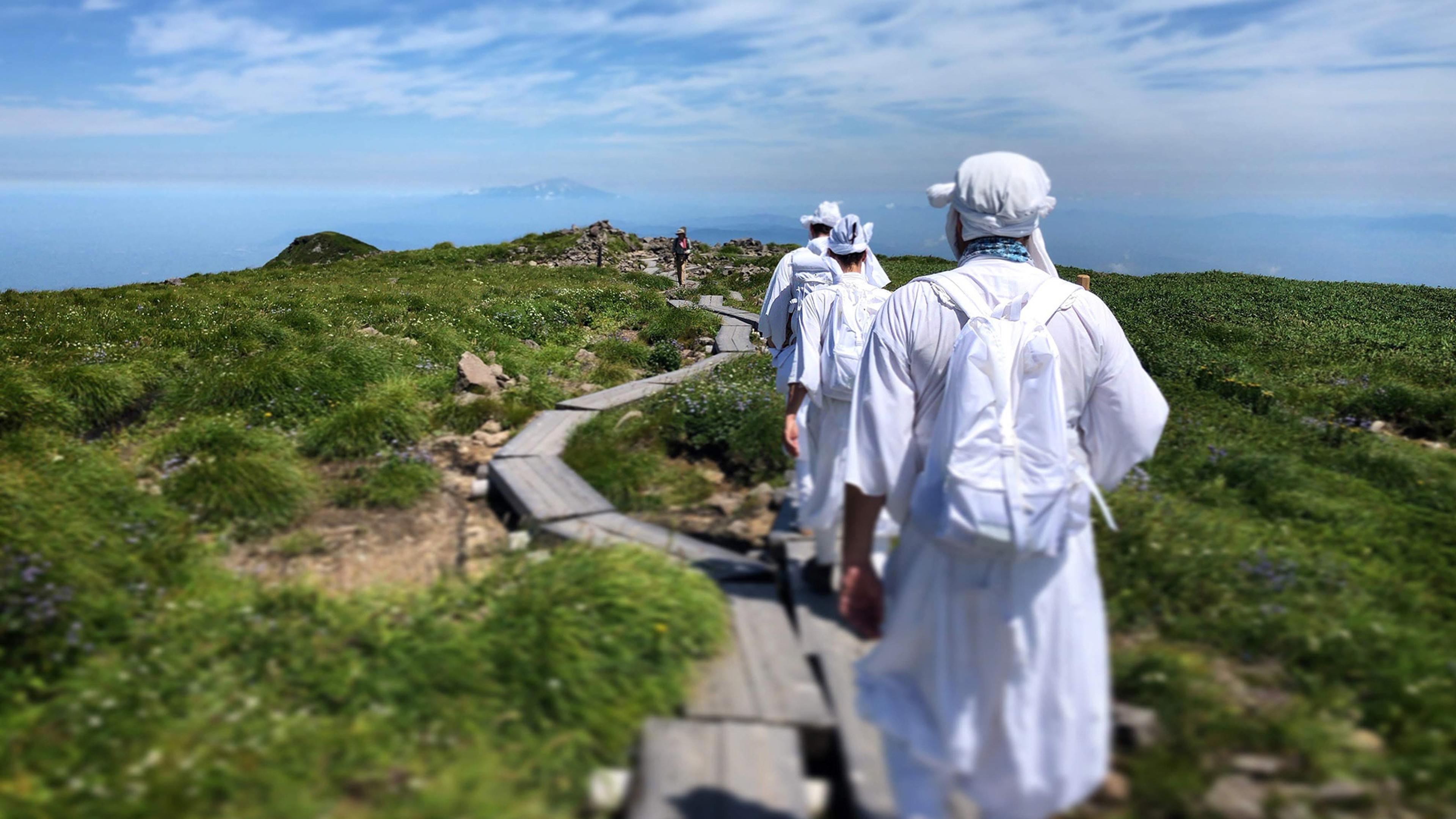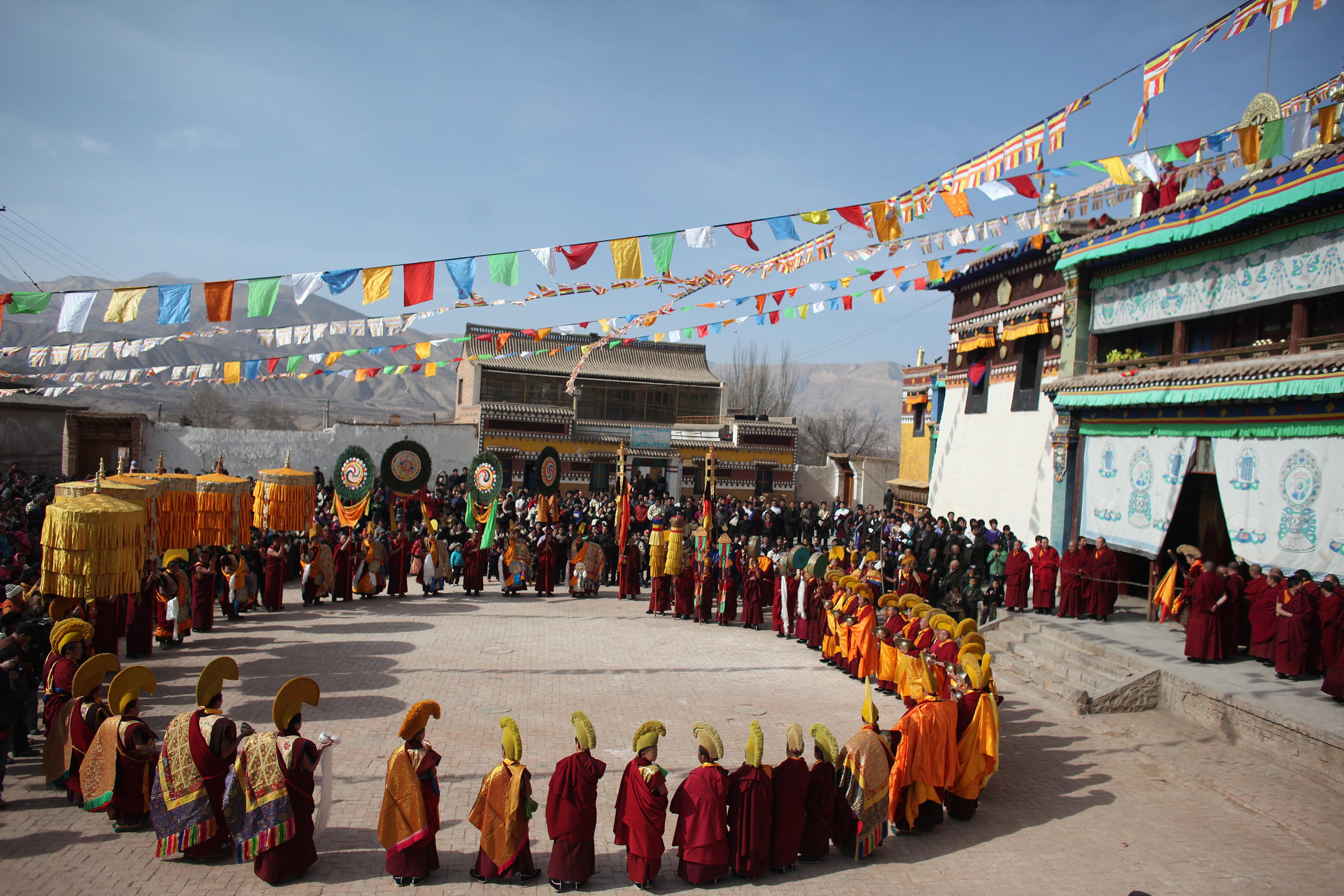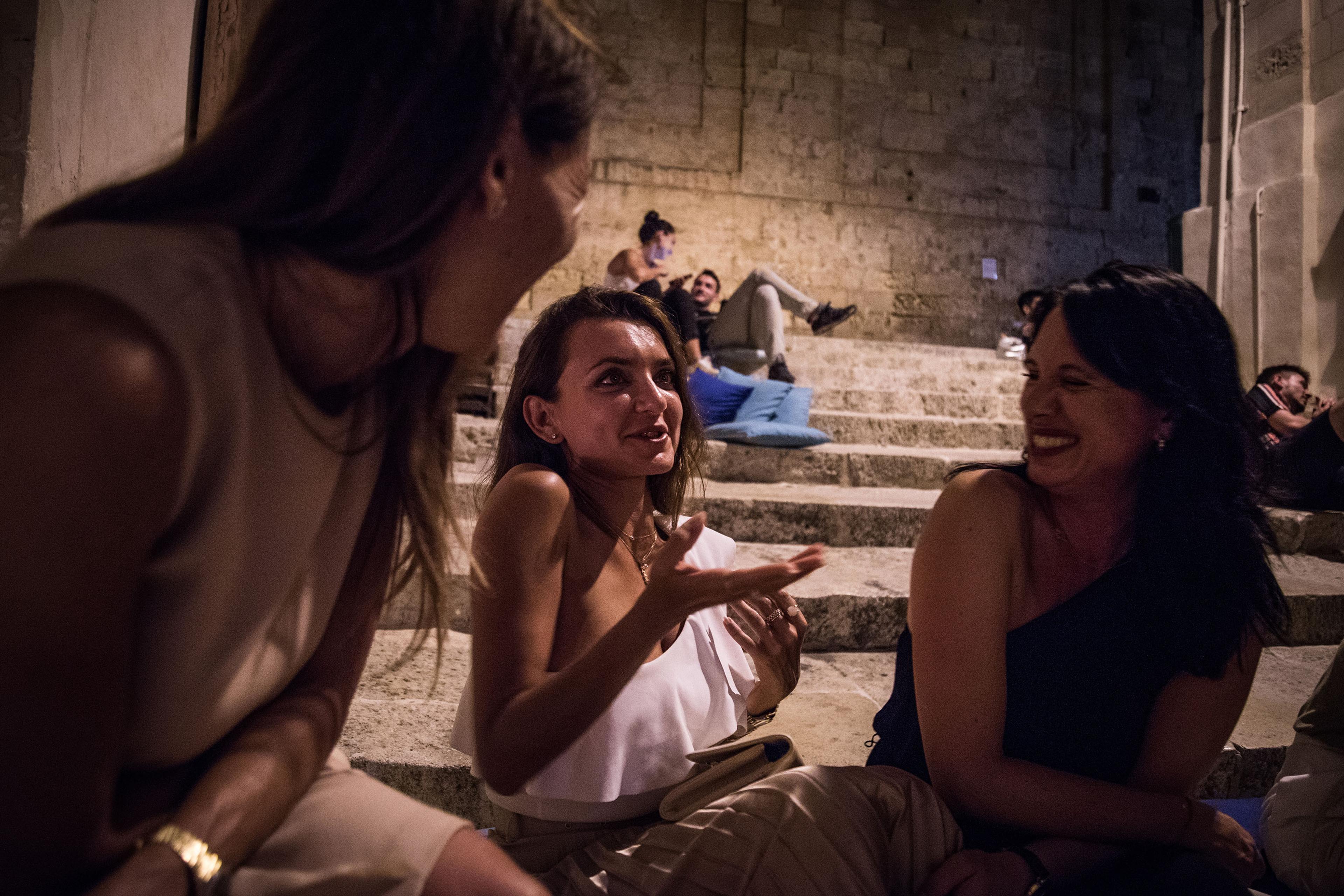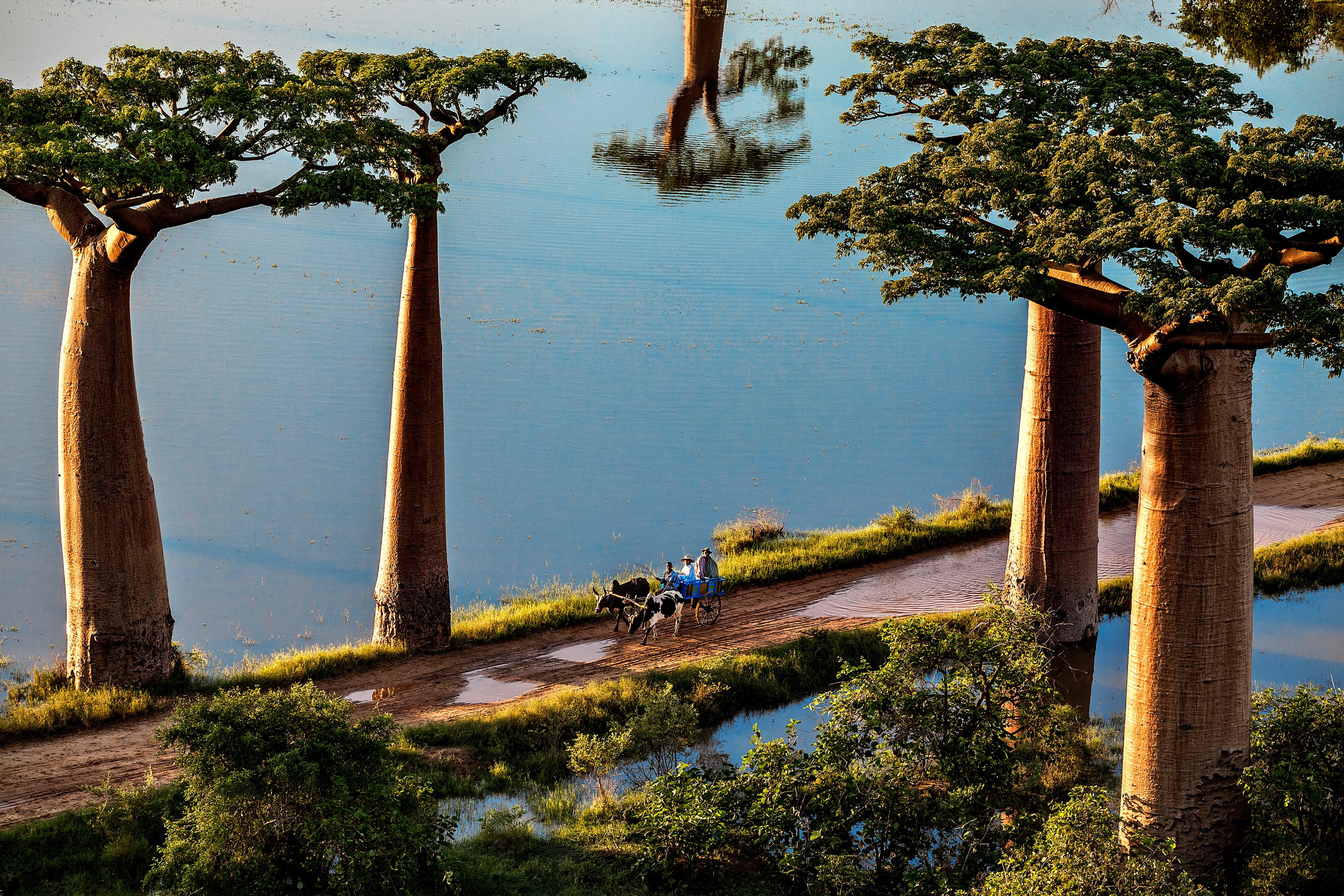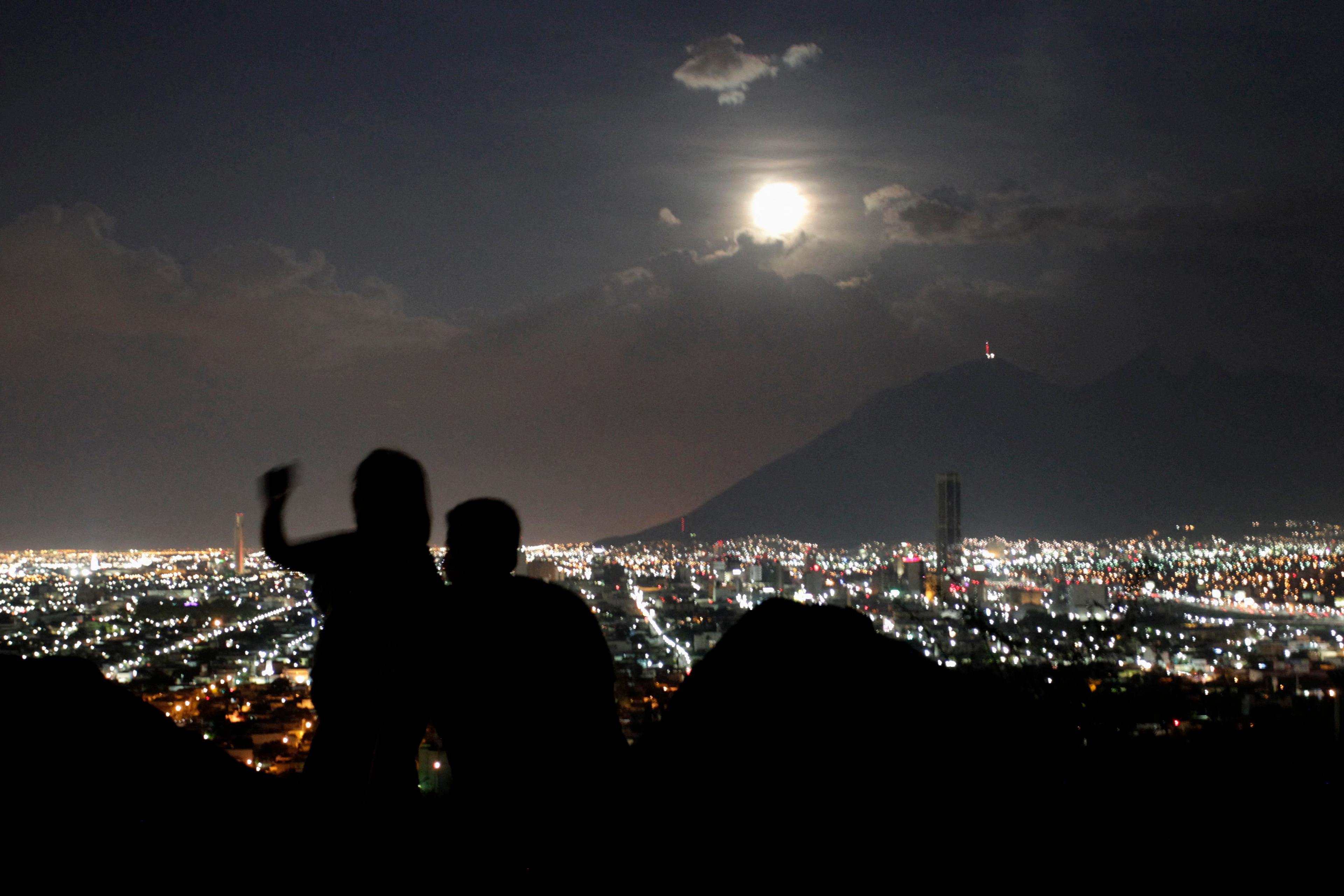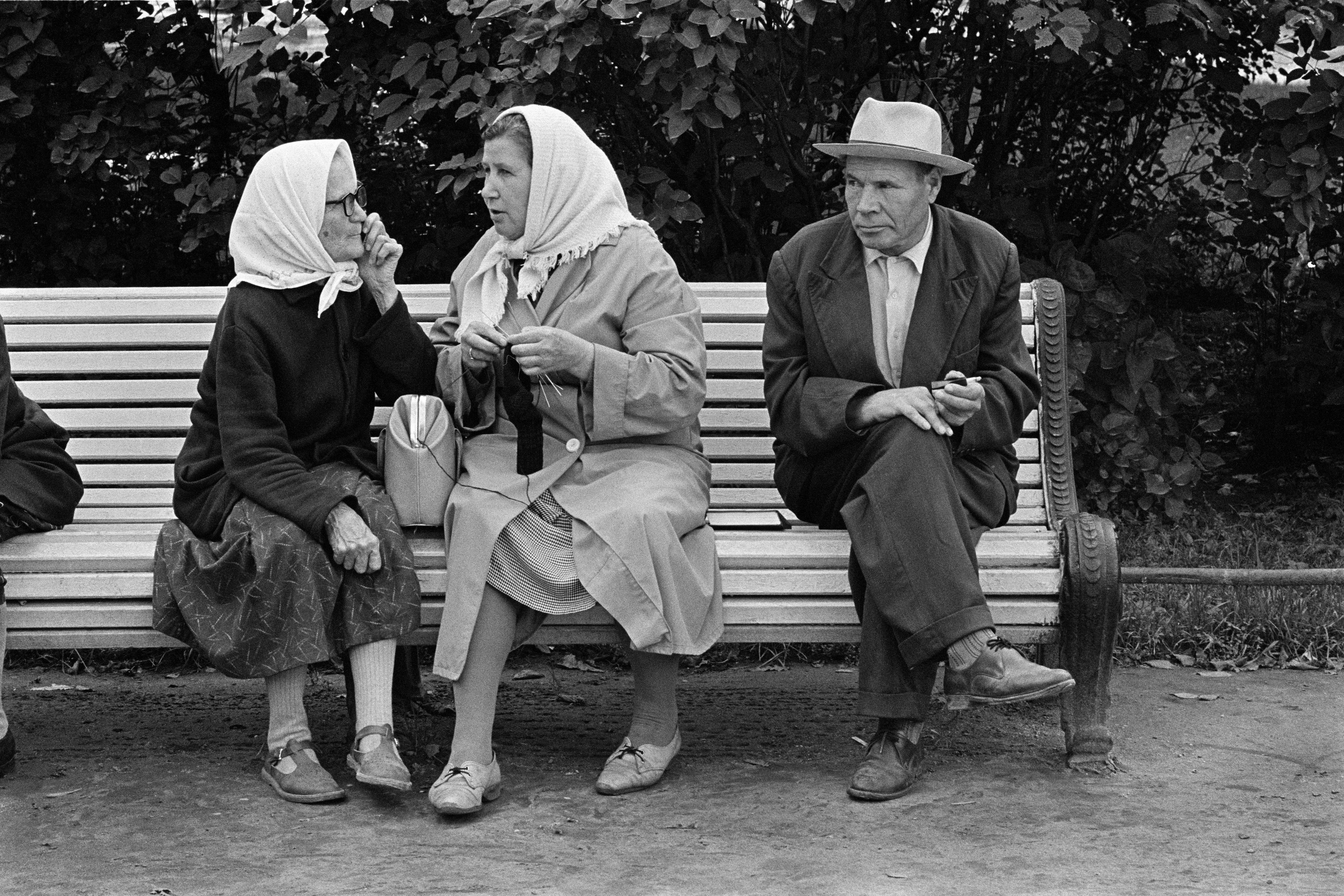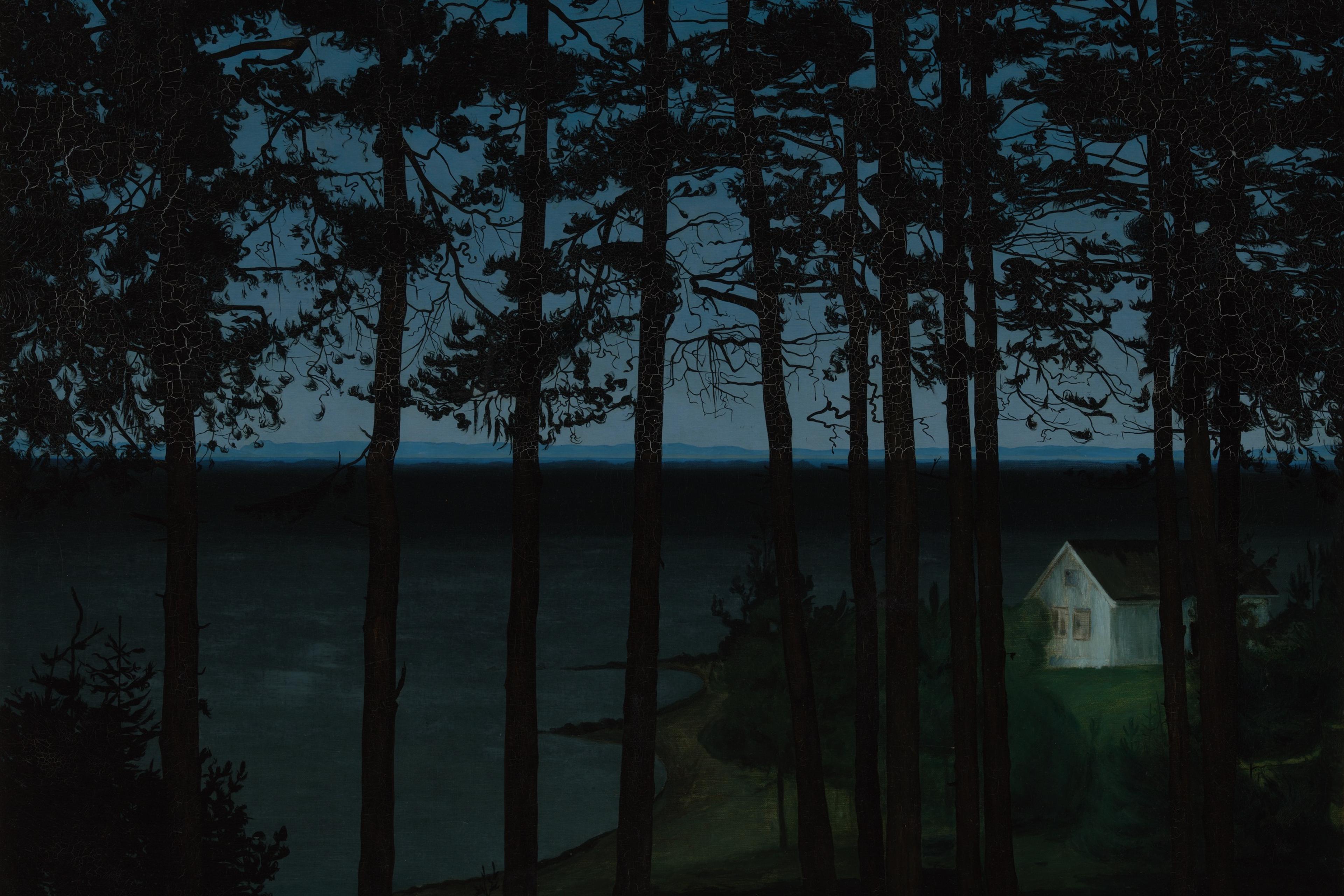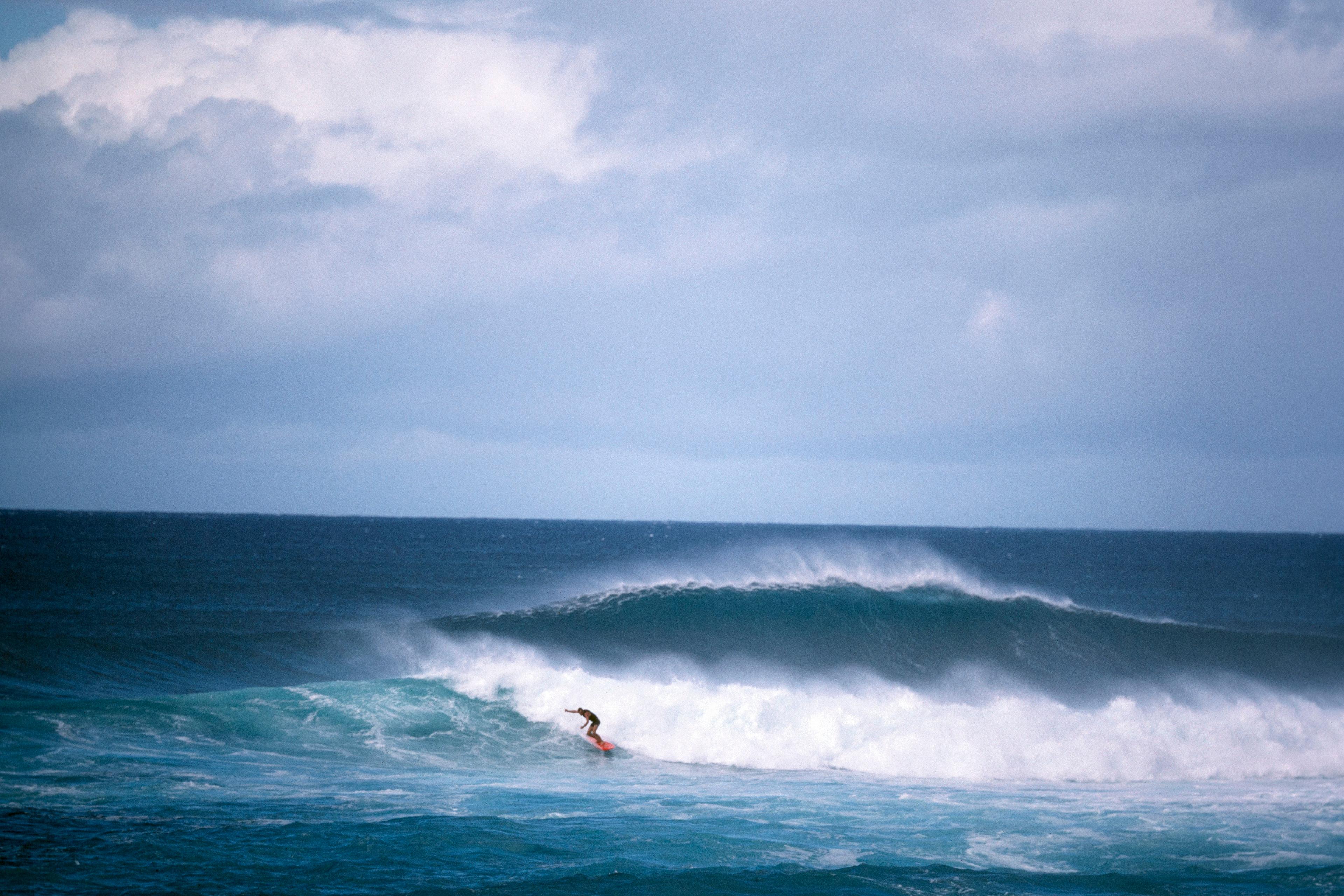It begins with a death in the mountains. Only, it’s my own.
Wearing the white robes that are used to dress the dead in Japan, I bow my head deeply as drums are beaten and conch shells are blown – reminders that the first rite of my yamabushi ascetic training is beginning. My funeral is starting. Along with a small group of uninitiated who are also preparing to ‘die’, I start a symbolic pilgrimage into the afterlife, descending the slopes of Mount Haguro, a cedar-covered mountain in Japan’s northern Yamagata Prefecture.
Mt Haguro, along with and nearby Mt Gassan and Mt Yudono, form the Dewa Sanzan, the three sacred mountains of Dewa, as the region was once called. For yamabushi, and the Shugendō tradition they practise, there are few holier places. Mountain ascetics have been practising rituals and magic on Dewa Sanzan since at least the 8th or 9th century, and perhaps much longer, back to a point in history where myth and memory begin to blur.
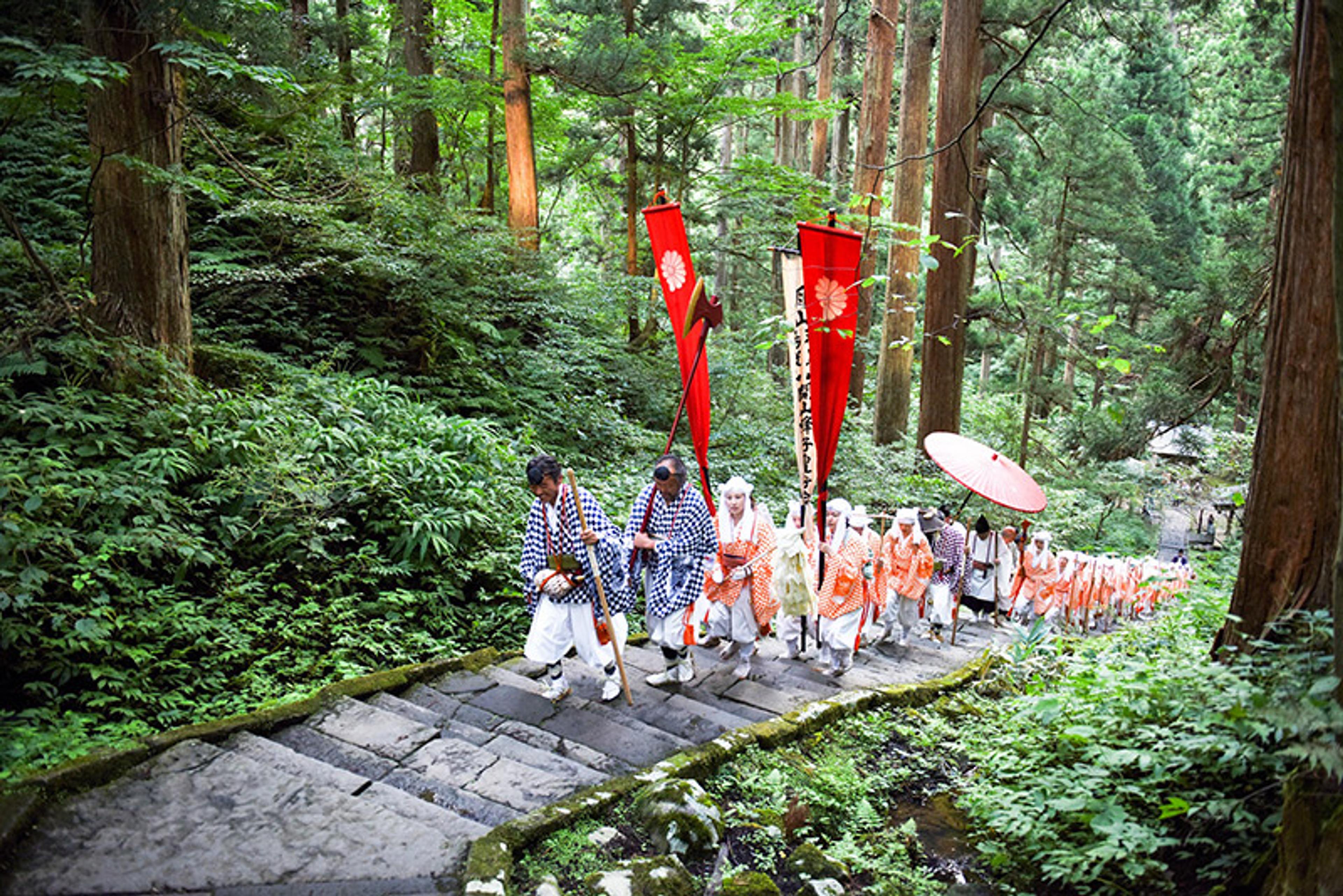
A procession of female yamabushi during training on Mt Haguro. Photo courtesy Yamabushido
As a faint mist settles in among the towering cedar trees (some more than 1,000 years old), our funeral procession slowly ascends Mt Haguro’s stone stairway. It’s summer, but the air here is still cool. When the poet Matsuo Bashō made a similar journey through these holy mountains in 1689, he wrote a haiku describing the summer wind being ‘scented’ with the clearly visible snow of Mt Gassan in the distance. Today, it smells of pine needles and earth.
We walk, and the constant ringing of yamabushi bells and the rhythmic stamping of feet are the only sounds we hear – no pilgrims will speak during the multiday ritual. Our meditative trance is broken only by instructions from our guide, a white-haired yamabushi priest named Master Hoshino. And, in response, we utter just a single word: ‘Uketamo.’ It means ‘I accept.’
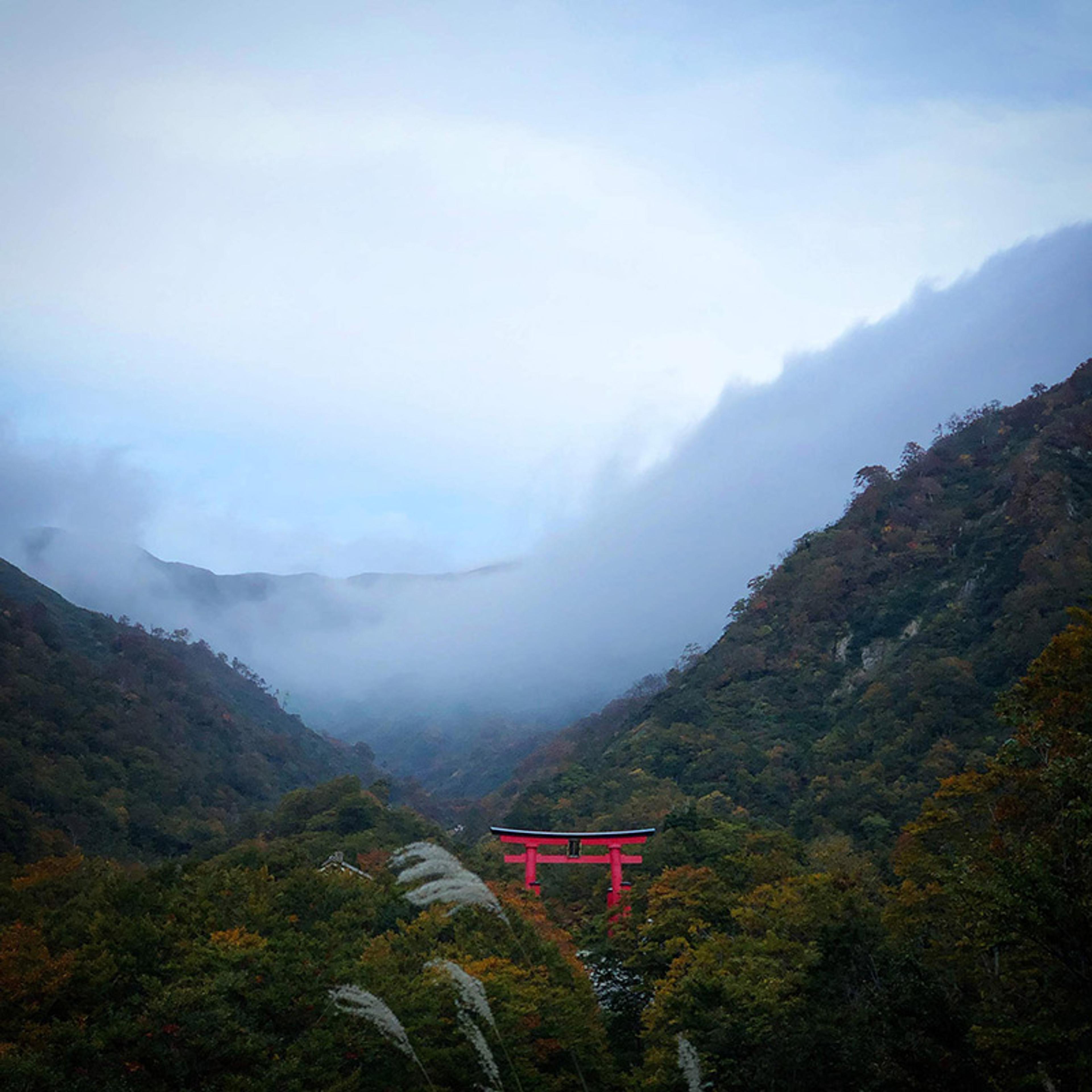
The Torii (shrine gates) of Yudono-san Jinja, Mt Yudono Shrine. Photo by Tim Bunting
After nine hours of climbing, first up, then down, Master Hoshino gives us our next instruction: ‘We will now climb Mt Haguro.’ Uketamo. And when we’ve finished climbing Mt Haguro, there’s another instruction: ‘We will now wash ourselves in the river.’ Uketamo. And then another: ‘We will now walk through the night.’ Uketamo. And on, and on, and on. At every stage of the pilgrimage – traversing snowy peaks, wading through gushing rivers, chanting, practising rites in sacred zones, or meditating under flowing waterfalls – the response is always the same. I accept, I accept, I accept.
Outside Japan, the notion of acceptance is more closely associated with Stoicism, a philosophical tradition that may appear alien to the mountain rituals of Shugendō. Developed over centuries by a disparate group of philosophers from the ancient Greek and Roman worlds, Stoicism views acceptance as a way of living better, not a way of submitting to ritual suffering. For the Roman emperor Marcus Aurelius and other Stoics, overcoming fear, grief and anger involves interrogating our beliefs, and thinking differently – often by accepting those things we cannot change, or exposing ourselves to what we fear. Stoic philosophy is not just a set of beliefs or ethical claims, but a way of life involving constant practice or training and self-reminders.
Today, the Stoic’s form of acceptance has become the philosophical core of everything from cognitive behavioural therapy and ‘mindfulness’ practices to the modern military mind of soldiers. But Japan’s yamabushi, who practise Shugendō, offer a slightly different way of approaching acceptance. As a complex set of rituals, esoteric practices and secrets, Shugendō is a religious and philosophical tradition that offers us an alternative to Stoicism – a version of acceptance that is more embodied, visceral and environmentally attuned. What would modern approaches to mindfulness look like if they had inherited the wisdom of Shugendō rather than of Stoicism?
I was not born in Japan. I’m a New Zealander who moved to Yamagata in 2010. I have a family here, and I work as a university lecturer, a translator, and an interpreter. I’m not what you would typically imagine when you hear the words ‘esoteric ritual practices’. But, then again, as I found out when I became a yamabushi in 2017, neither are many of the other practitioners of Shugendō. These mountain ascetics – mostly Japanese men, but increasingly women, too – include CEOs and retirees who join for distinct, but similar reasons. We all seek a different path through the contemporary world.
I joined after the death of my father. While grieving, I found solace walking the forests of Dewa Sanzan. I sought closeness with the mountain, but Shugendō promised a deeper relationship. And so, I attempted the akinomine (autumn peak ritual), donning white robes, carrying a walking stick and uttering ‘Uketamo.’ As I drew nearer to the mountains, I found myself entering an elaborate world of ritual and embodied knowledge, with unexpected parallels to Stoicism.
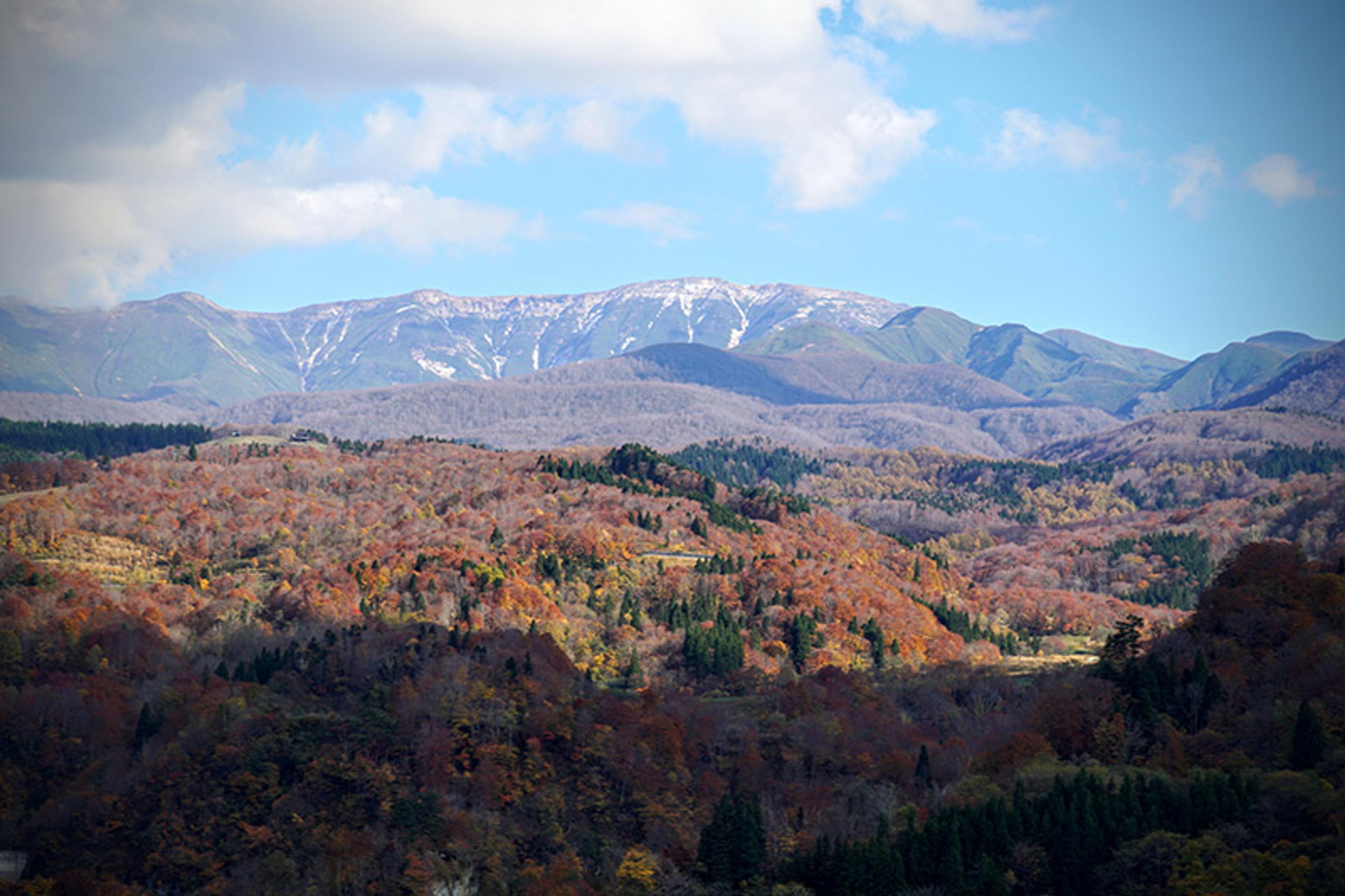
Mt Gassan in the autumn. Photo by Tim Bunting
However, unlike Stoicism, Shugendō is not easily explained. In fact, as yamabushi, we swear an oath of not sharing what happens on the mountain. This isn’t just to keep secret the mystery of our practices. Our time there represents our time in the womb before we were born, a time we have no recollection of. But the difficulty is not only because of our secrets. The editors of the book Defining Shugendō (2020) describe the tradition as ‘so intricate, complex, and diversified that it would be preposterous to pretend to cover every aspect of it in one single volume’. Part of that intricacy is because Shugendō is deeply syncretic, perhaps more than any other belief system in Japan – and that’s saying a lot in a nation of syncretic traditions. Shugendō developed from a combination of primitive folk practices, animism, Vajrayana or Esoteric Buddhism (known as Mikkyō in Japanese), Shintoism, and Taoism. But why did mountains become so important in this combination? As the Japanese folklorist Ichiro Hori explains it in Folk Religion in Japan (1968), the mountains in Japan were once ‘believed to be the world of the spirits and of the deities, buddhas, or bodhisattvas … where souls of the dead also must undergo initiation in order to enter paradise’. Hori believes that Shugendō was built on a set of ‘primitive but fundamental common beliefs in mountains’.
In the 6th and 7th centuries, these various beliefs, philosophies, doctrines and ritual systems are believed to have been organised into a single practice by En no Gyōja (En the Ascetic). As En no Gyōja spread Shugendō throughout Japan, a belief solidified that the mountains running down the nation’s spine were not only sources of profound and potentially dangerous spiritual power but fountains of wisdom. This is a form of wisdom that is beyond the realm of comprehension for us mere mortals. As such, it cannot be learned from books, conversations or lectures. It must be experienced.
In this way, many facets of yamabushi training have striking parallels with Stoicism. Stoic philosophy is not just a set of beliefs or ethical claims, but a way of life involving constant practice or training. For example, Seneca encouraged the practice of poverty to develop an ‘immunity’ to fear by practising and accepting the possibility of the worst-case scenario: ‘Set aside a certain number of days, during which you shall be content with the scantiest and cheapest fare, with coarse and rough dress, saying to yourself the while: “Is this the condition that I feared?”’

Dewa Sanzan Shrine at the summit of Mt Haguro. Photo by Tim Bunting
Many yamabushi have lived a parallel version of what Seneca suggests – and some lived a more radical version. These mountain dwellers didn’t just content themselves with scanty fare and rough dress, but communion with knowledge through the physical suffering that comes from mountain training. One of the core virtues of Shugendō is ninniku (patience), which means continuing ritual practices and not complaining, even when ‘hot, cold, hungry or thirsty’. This may give the impression that yamabushi acceptance means enduring punishing suffering. It’s true that, in the past, full-time yamabushi lived and died on the Dewa Sanzan mountains after enduring incredible hardships. These days there are none. Rather, yamabushi are found in all walks of life thanks to the philosophy of hansei hanzoku, or ‘half sacred, half secular’. This core concept describes how modern-day yamabushi have normal lives, yet also happen to occasionally train in the ways of Shugendō, practising ninniku. Through this intense but periodic training, yamabushi are positioned to connect the sacred with the mundane, taking hard lessons of acceptance learned in nature, and applying them to their lives.
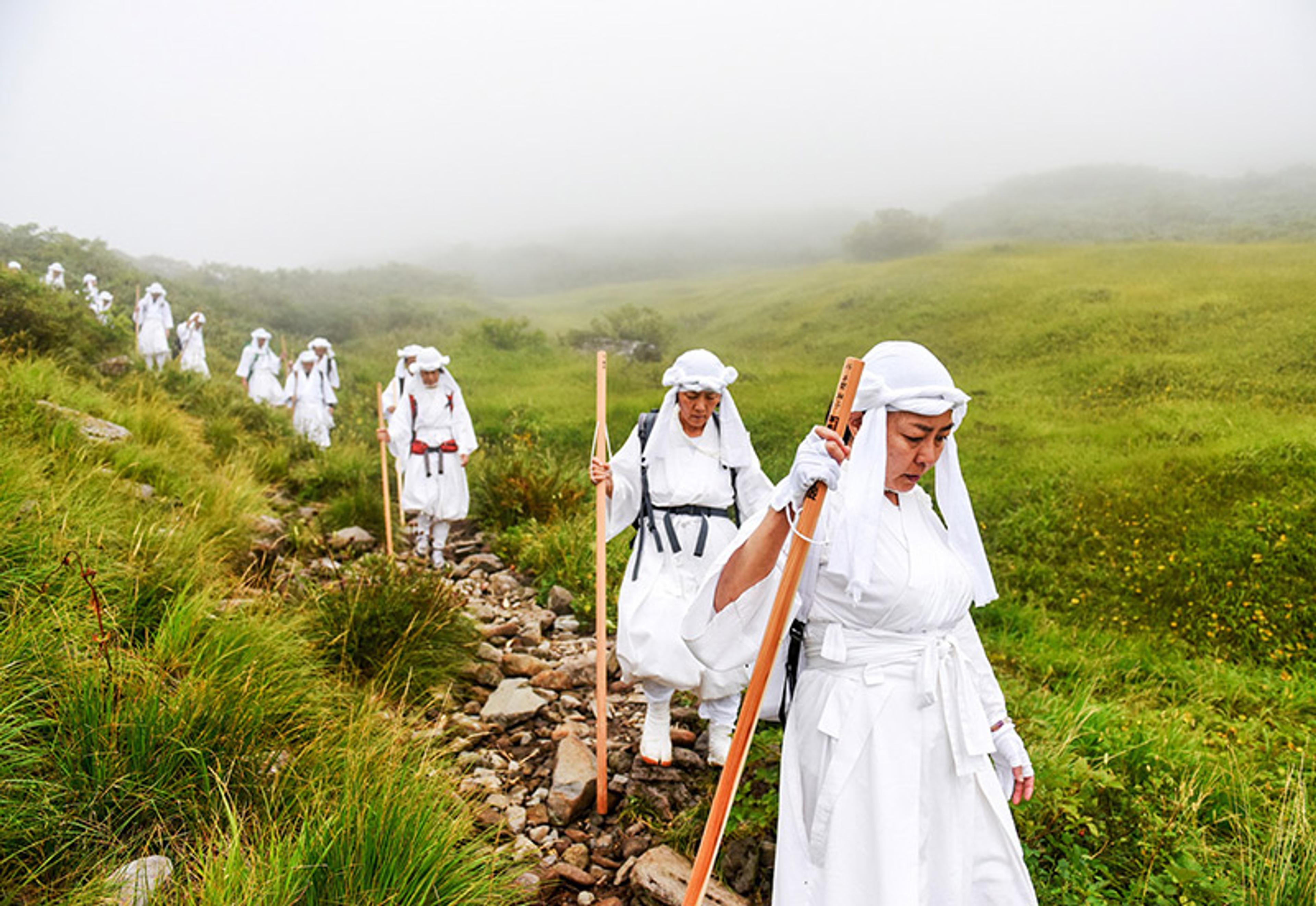
Yamabushi training on Mt Gassan. Photo courtesy Yamabushido
The Stoic model of acceptance is built around living in the present and not worrying about a future or past you cannot control. As Seneca wrote: ‘The whole future lies in uncertainty: live immediately.’ Shugendō training is also a practice of living in the moment. Walking meditation, what we call tosogyo, is one way we do this. It’s impossible not to be in the moment when you’re walking on a precarious snowbank, where one wrong step could prove fatal. And through tokogatame meditation – toko means ‘ground’, and gatame literally means ‘to harden or solidify’ – we learn to be in the moment, to solidify our place in the world. These practices might seem similar to current mindfulness practices that are inspired by Stoicism. But the Stoic philosophy of living in the present is incomplete.
According to Shugendō philosophy, Seneca’s invitation to ‘live immediately’ and Marcus Aurelius’ phrase ‘confine yourself to the present’ are both contradictory. That those phrases were written down in books – Seneca’s On the Shortness of Life and Aurelius’ Meditations – proves that these philosophers did not constantly live in the moment. Just as speaking distracts yamabushi from their training and their ability to live in the moment, so does writing. In Shugendō, there is no place for self-reflection on daily problems through journaling. We write not for the present, but for the future. We write to reflect for a later version of ourselves or others. We don’t write to be in the moment. Likewise, reading can also take our minds away from the world, away from concentrating on our training and, worst of all, away from the now. What would it mean to truly accept and deeply embrace the possibilities of the present?
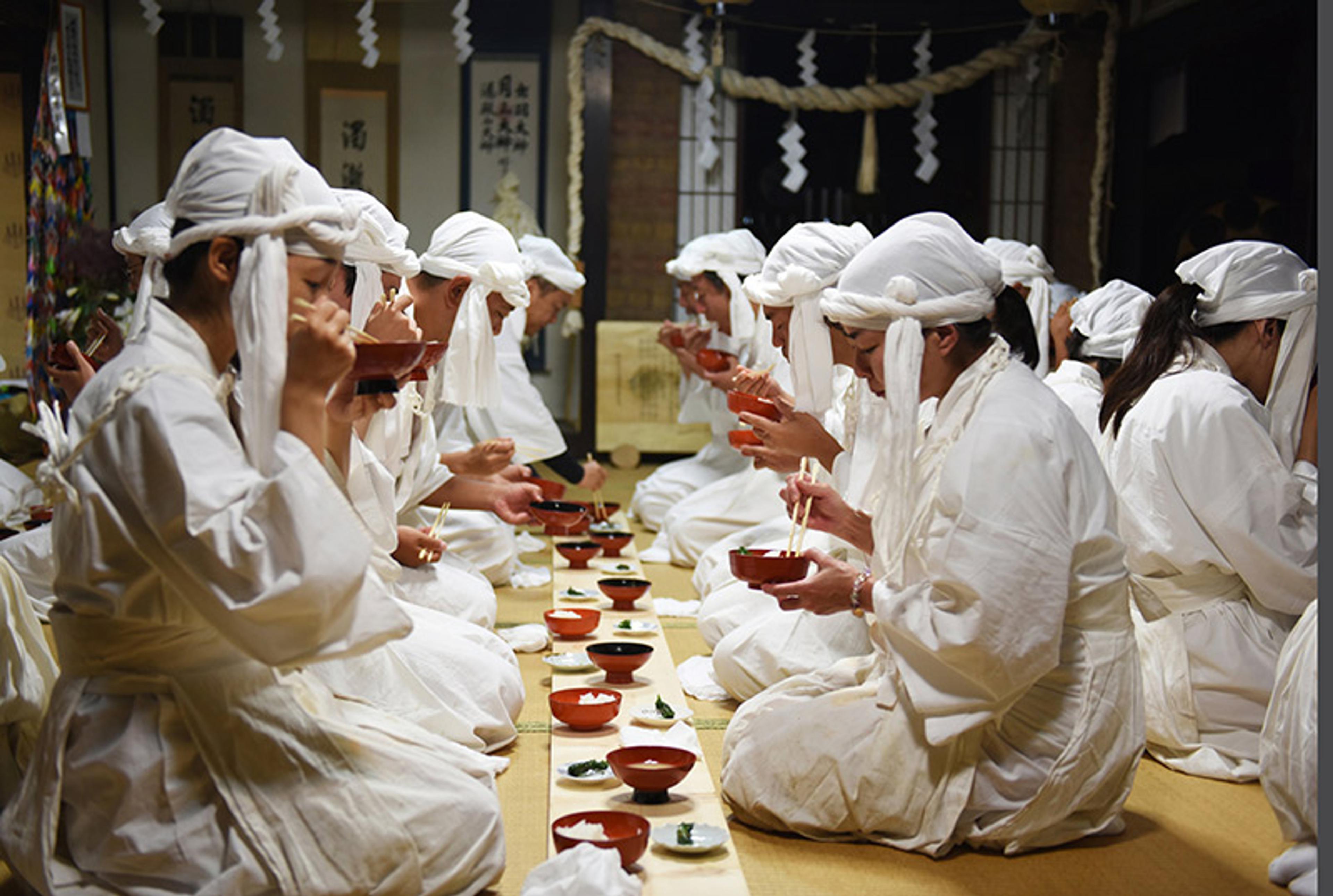
Mealtime during yamabushi training at Daishobo pilgrim’s lodge on Mt Haguro, run by Master Hoshino. Photo by Yamabushido
Aurelius has another quote that has come to define Stoicism: ‘Live each day as though it were your last.’ For the Stoics, meditating on your existence, or rather, accepting your death, is a means of motivation. Yamabushi take this to the extreme by making death visceral and material. In the Shugendō tradition, the three peaks of Dewa Sanzan – Mt Haguro, Mt Gassan and Mt Yudono – are mountains of rebirth. To be reborn, one must first ‘pass away’ through the symbolic death in yamabushi trainings on these mountains. Yamabushi believe they are training their own dead soul. To be reborn, the yamabushi of Dewa Sanzan believe that one must accept their situation, their place, and their current self at every stage along the journey. This is why it is so important to constantly repeat: ‘Uketamo.’ Death is accepted not as an idea, but as a material reality: we enter the mountains wearing white shiroshozoku garments that the dead are dressed in, and carrying a wooden kongodzue staff that resembles the sticks used to mark graves in cemeteries. In the past, when yamabushi died during training in the mountains, their staff was left behind as a grave marker. After dying, travelling through hell and across the afterlife as we travel Dewa Sanzan’s peaks and valleys, we are physically ‘reborn’.
As someone who accepts Stoicism and Shugendō, I can see that both have their place. On the surface, Stoicism may appear to be more suited to the struggles of our modern lives. But Shugendō is the more practical of the two. Stoicism relies on thought experiments and reflection; it relies on rational thinking. Shugendō relies entirely on learning from the world, from nature, from the mountains. As yamabushi, we are not tasked with rationally escaping our problems, but simply accepting the vicissitudes of the Universe as it inexorably moves between life and death. For me, these embodied lessons of nature – indescribable through human language – have provided the most solace.
So how do you begin? Master Hoshino has an instruction for this, too: ‘Put yourself in nature, sense, then reflect on what you sense.’ Uketamo.
